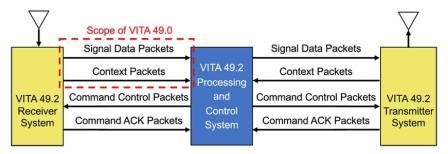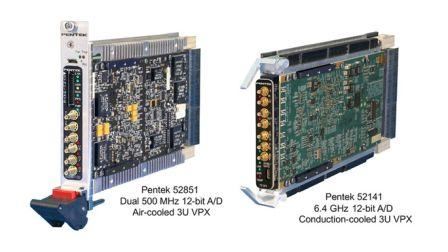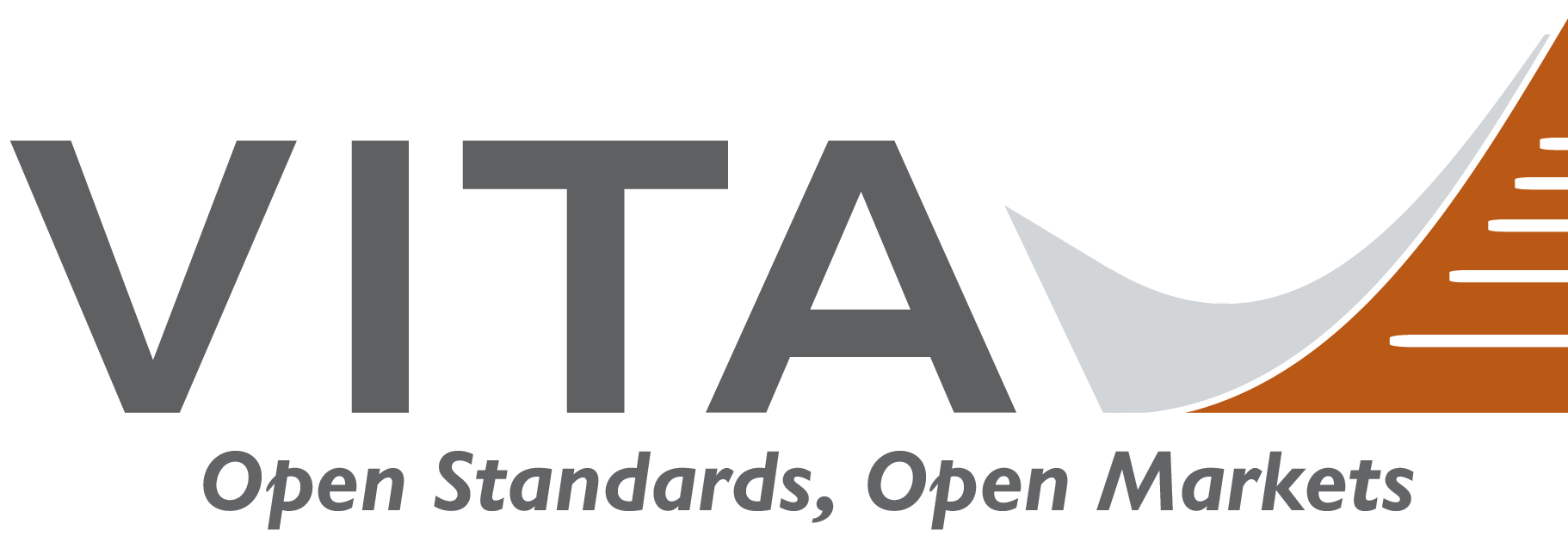Inspired by enormous commercial market potential for practical digital solutions for radio signals, innovative vendors of data converter and DSP technology began rolling out successive generations of faster, smaller and less expensive devices. Software radio technology now dominates commercial, government and military systems worldwide, growing at almost 10% annually and is expected to reach $30 billion by 2022 according to the 2018 MarketsandMarkets, Inc. report titled: “Software Defined Radio Market – Global Forecast to 2022.”
The start of a standard
Back in 2006, the VITA 49 working group recognized these emerging needs and began developing the VITA Radio Transport (VRT) protocol to define a standardized format for delivering digitized intermediate frequency (IF) radio signals. An initial goal was to define packet structures for received signals that contained not only the digitized signal samples, but also metadata information that describes the signal. The first release of the standard was VITA 49.0, which defined IF Data Packets and Context Packets. This insightful forecasting has proven invaluable to today’s software defined radio market.
Resonating well with the needs of vendors and customers, VITA 49 served as a proven springboard for extending its reach to standardize additional requirements of software radios. The latest version of the standard was ratified by ANSI and VITA in August 2017 as VITA 49.2. The original VITA 49.0 IF Data Packets were renamed as Signal Data Packets for added versatility (Figure 1). And, they were enlisted in the new role of delivering outgoing signals into radio transmitter equipment. Here, the time stamp can specify precisely when trigger transmit signals are generated, which is ideal for radar pulses.

Figure 1: VITA 49.2 supports transmitter Signal Data Packets, plus command and control functions.
Updates incorporate industry changes
VITA 49.2 greatly expands the scope of Context Packets to add many more standardized conventions for new receiver metadata parameters as well as to report operational status and parameter values for transmitters. Perhaps the most significant new aspect of VITA 49.2 is the ability to control and monitor the status of software radio equipment. Previously, this was done using highly proprietary reads and writes to dedicated hardware registers unique to each product.
Command Control Packets standardize parameter formats for tuning, bandwidth, sampling rates, antenna angle, transmit power, receiver gain and numerous other useful functions. Command Acknowledge packets sent back to the VITA 49.2 Processing and Control System confirm successful execution of the Command Control Packets to help ensure system integrity.
Growing mandates for standardized products
Because of customer flow-down requirements for VITA 49, defense and government embedded systems integrators are increasingly seeking products that support the standard. Following these market incentives, the open architecture COTS vendor community now offers a range of software radio products with factory-installed VITA 49 engines.
Below, two 3U OpenVPX software radio modules based on the Xilinx Kintex UltraScale FPGA are shown, both of which include factory-installed IP modules for generating VITA 49.2 Signal Data Packets containing A/D or digital downconverter (DDC) output samples with precision time stamping. (Figure 2)

Figure 2: 3U VPX software radio modules include FPGA-based VITA 49 protocol engines.
The Model 52851 provides two 500 MHz 12-bitA/D converters with DDCs and two 800 MHz 16-bitD/A converters. The Model 52141 features a 6.4 GHz 12-bit A/D or two 3.2 GHz 12-bit A/Ds, both with DDCs, and two 6.4 GHz 16-bit D/As with digital upconverters. An API library in Pentek’s Navigator Board Support Package supports all features.
Continued industry development
Like any successful standard, VITA 49 continues to evolve as new technology emerges and as the many active standards consortiums identify new requirements for deployed systems. Evidence of continued progress is ensured by the heightened participation in these efforts by three important groups:
-
Government and military organizations, which use and specify software radio systems for defense sectors and intelligence agencies.
-
Universities and research laboratories—often funded through government grants—that push the technology envelope of software radio by developing new waveforms, detection algorithms, signal exploitation techniques, spectral management strategies, electronic countermeasures, and new methods of encryption and security.
-
Equipment vendors and system integrators, who bring to the table engineering skills, packaging experience, project management and familiarity with open architecture standards for embedded software radio systems.
Together, this vital community of contributors represents a diverse powerhouse for sustained innovation and collaboration to meet future challenges.
